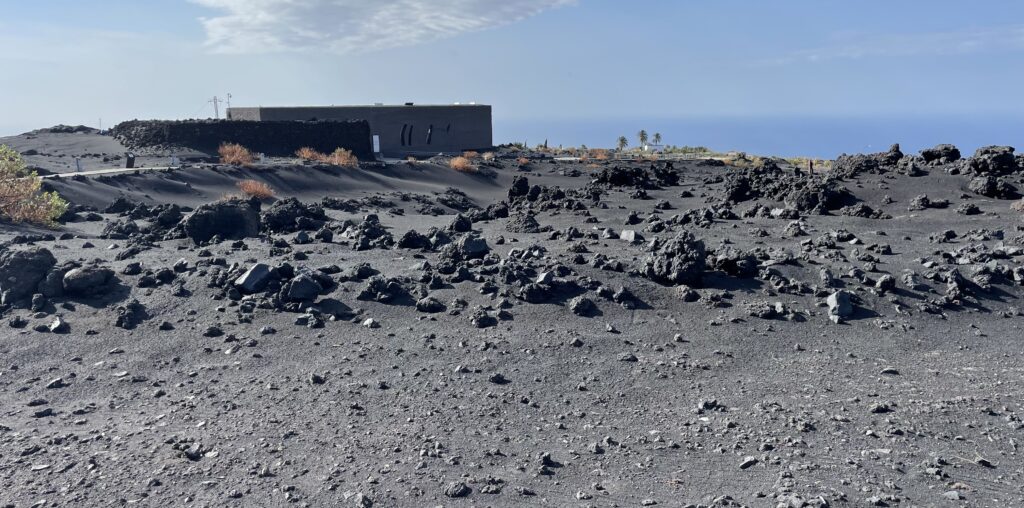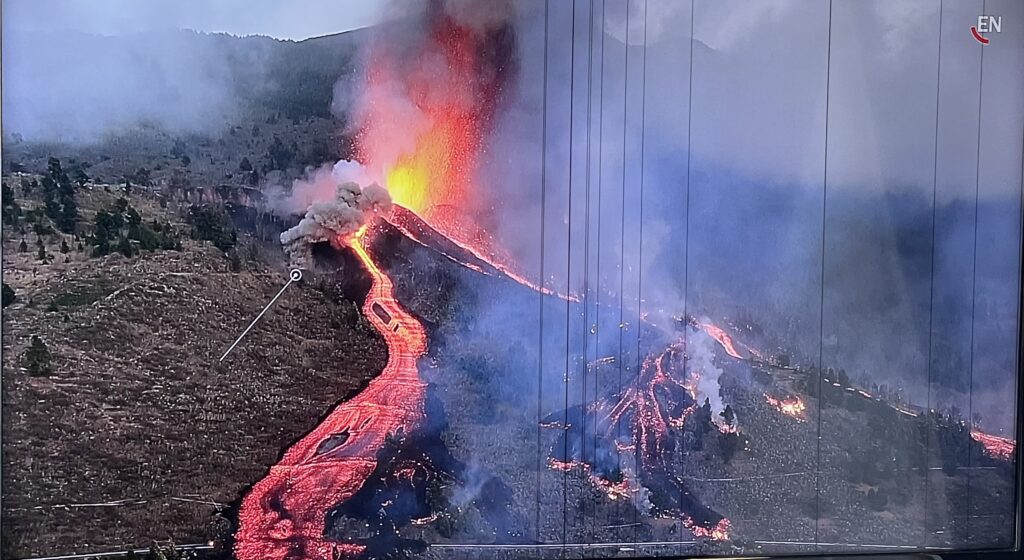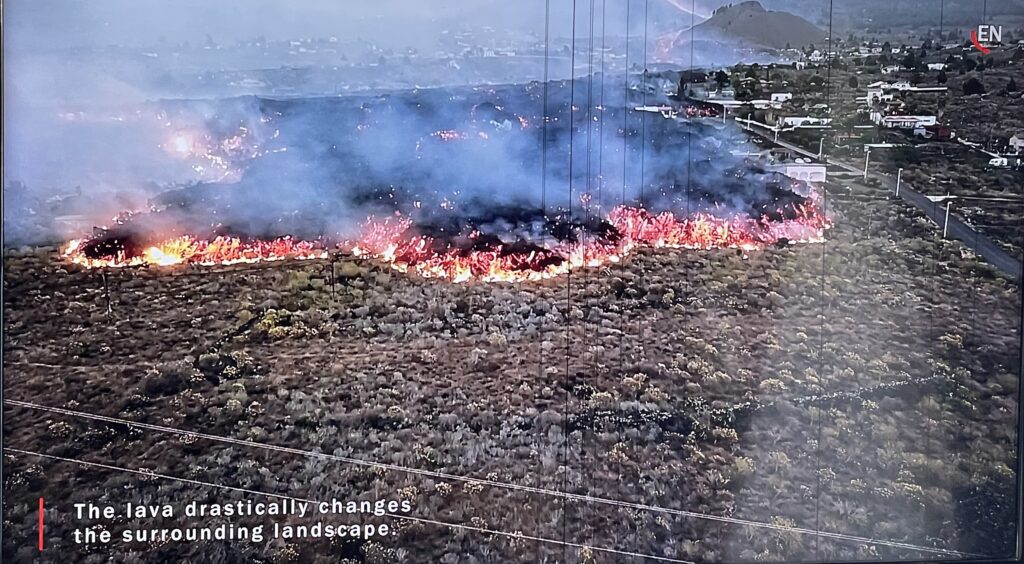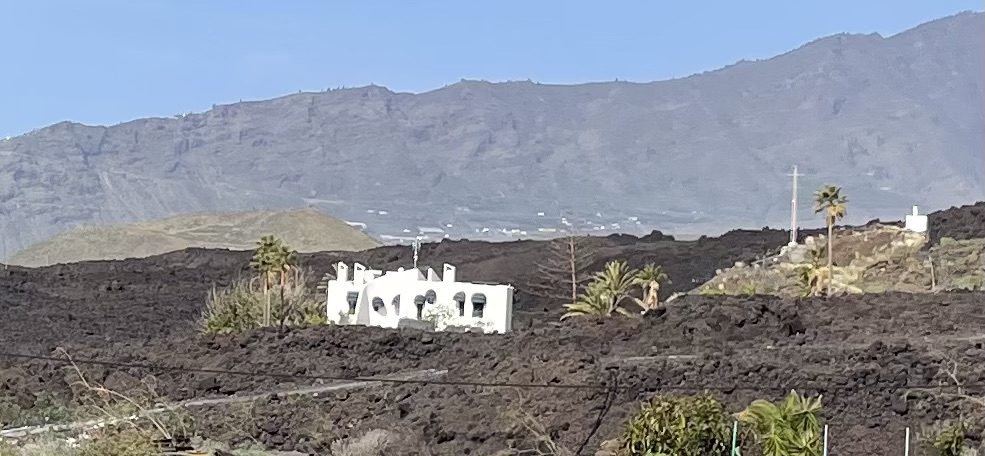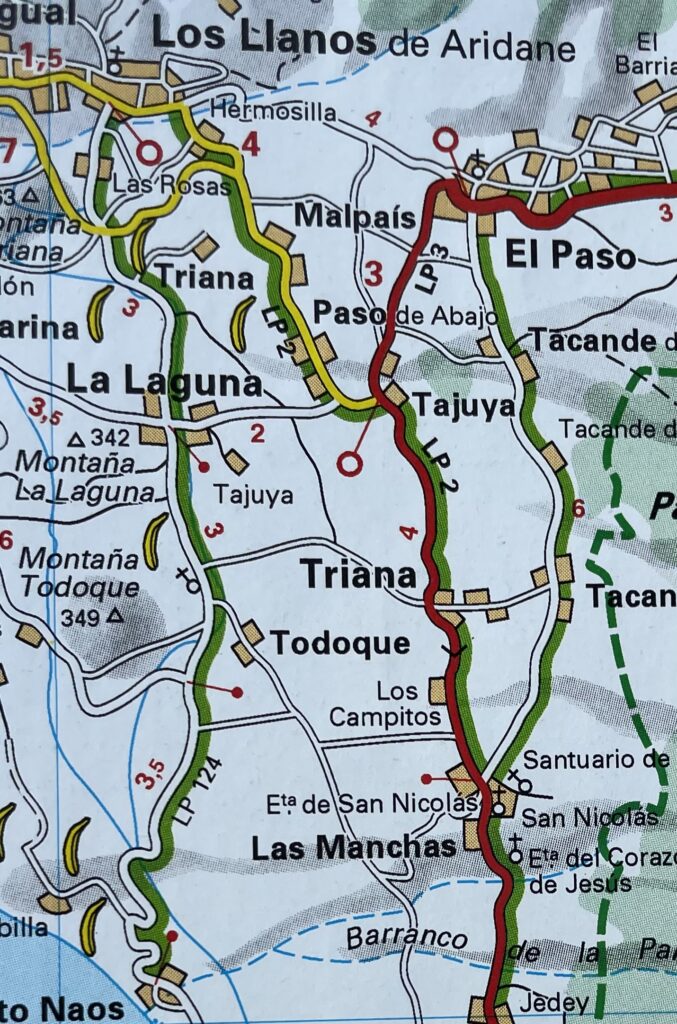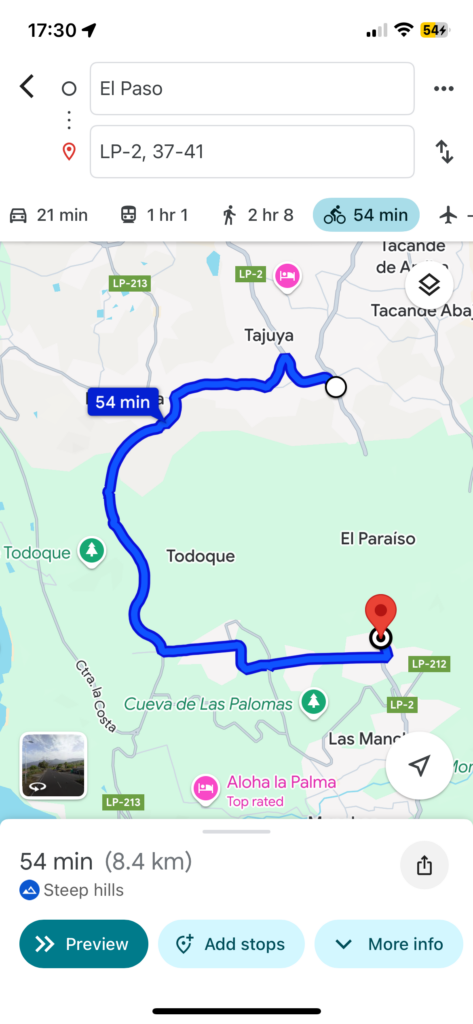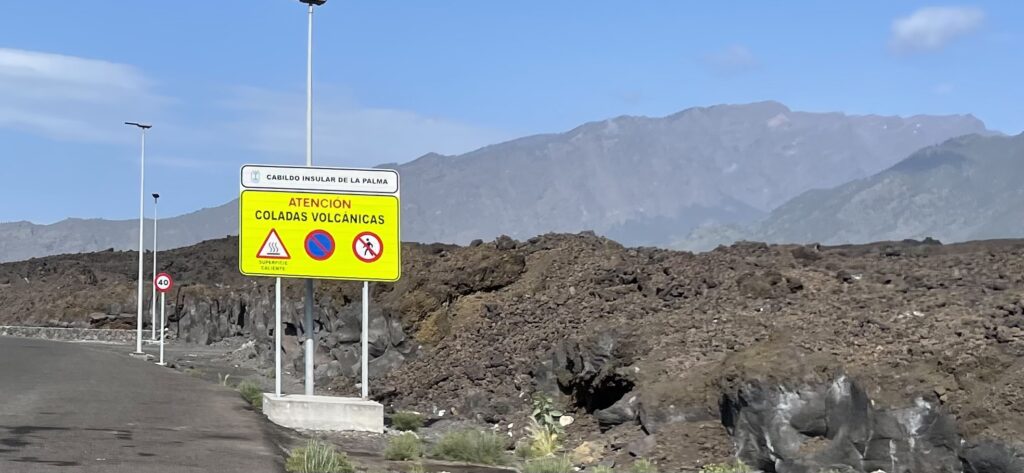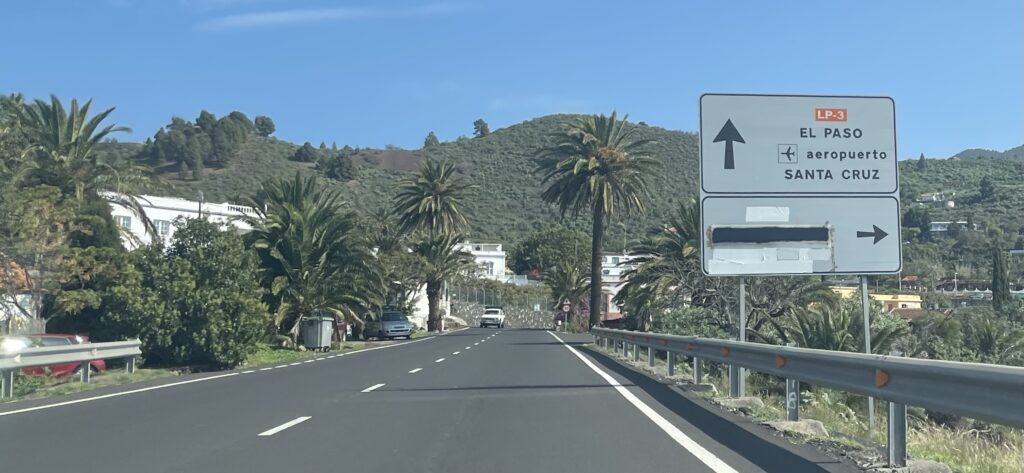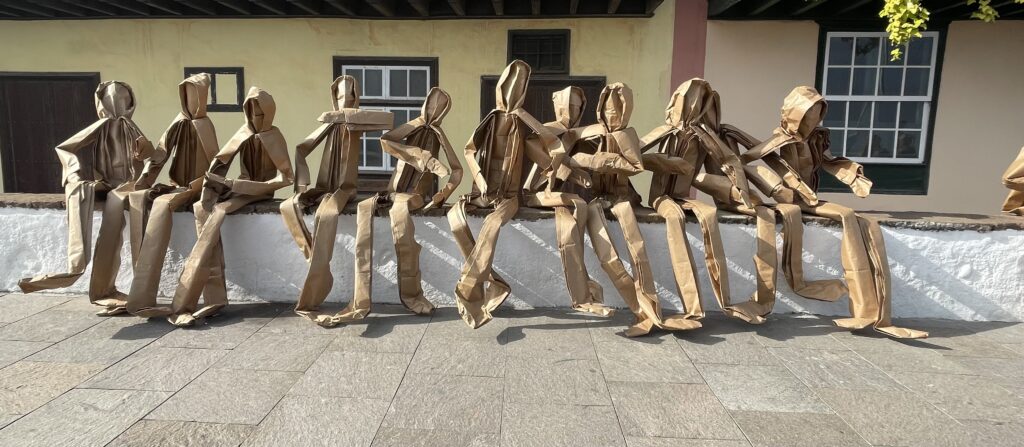In which Sid and Doris make the beginners’ mistake of assuming their 2023 road atlas of the Canaries is up to date.
Today’s aim is to drive to Santa Cruz de la Palma the scenic way – taking the main LP-3 road north and then across the middle of the island, armed with our guidebook and a 2023 road atlas of Spain which handily includes larger-scale maps for each of the Canaries.
The Little Box Of Rightness (aka Google Maps on Doris’s phone) seems to be a bit dubious about the anticlockwise circuit but eventually agrees it is ok, so off we trundle, and all is going well until Sid observes “We have run out of road”. The Shugmaster is sitting on the last square of undamaged tarmac.
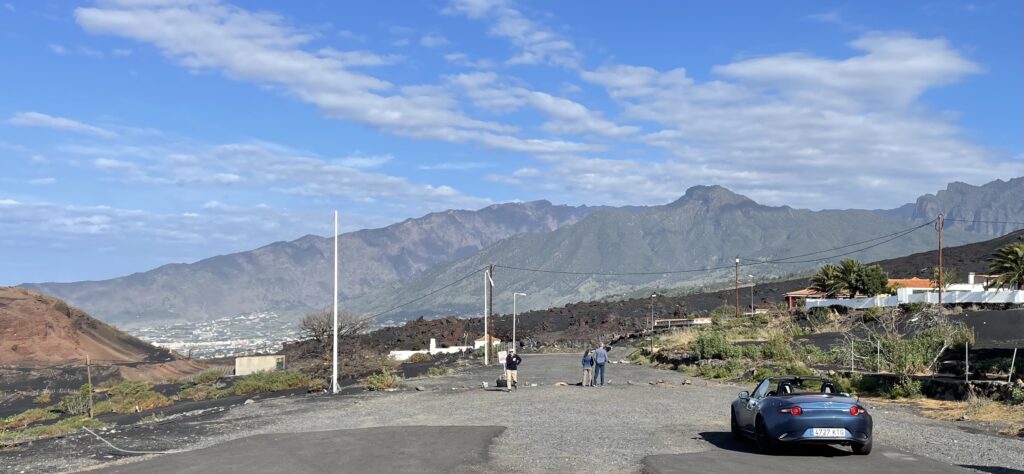
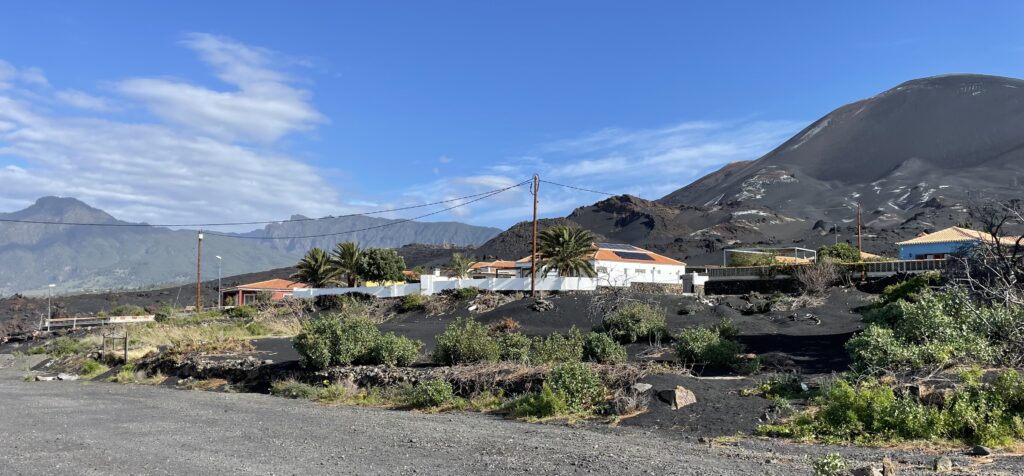 It turns out that that the volcano here erupted in 2021 and buried this area in a large amount of lava and ash. Oddly, yesterday’s visitor centre hadn’t updated their information boards, probably because a) it would have stopped that particular volcano being the recent-est, and b) it might worry the tourists that the whole thing went kaboom only 3 years ago.
It turns out that that the volcano here erupted in 2021 and buried this area in a large amount of lava and ash. Oddly, yesterday’s visitor centre hadn’t updated their information boards, probably because a) it would have stopped that particular volcano being the recent-est, and b) it might worry the tourists that the whole thing went kaboom only 3 years ago.
Before trying to find out where the road continues, Doris spots a visitor centre offering explanations and the doughty duo detour delightedly towards it.
As this well-kept-secret was only 3 years ago there is plenty of good quality video (alas shown on a slightly beaten-up screen but still worth some pics.
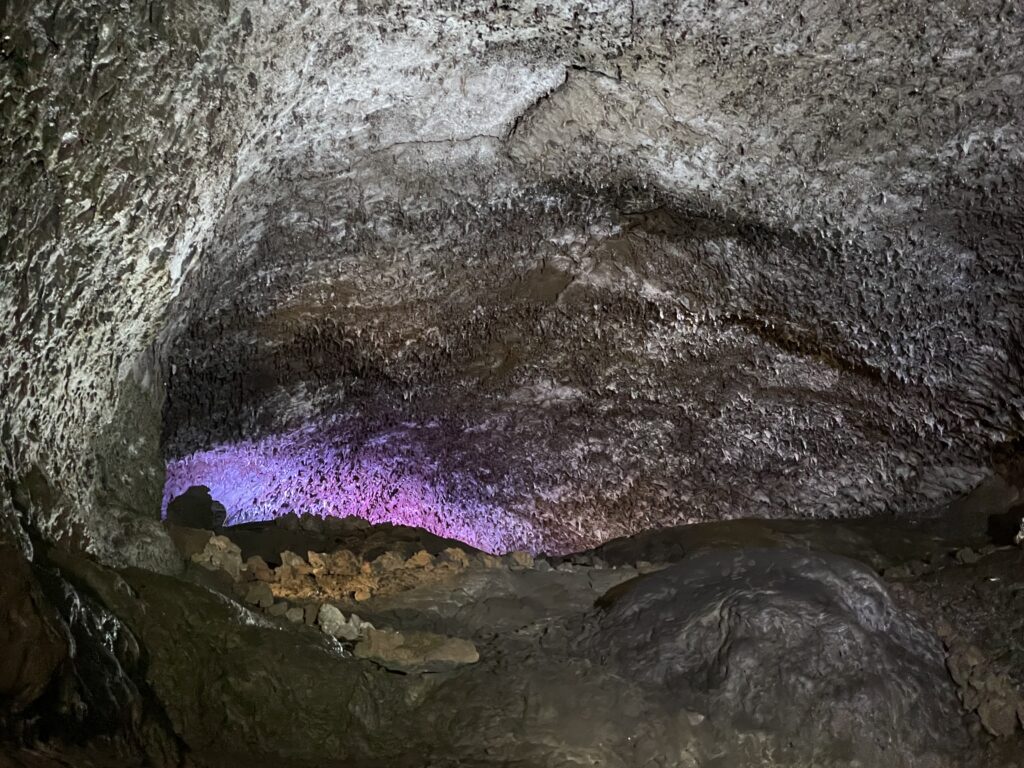 The museum also features a visit to a Real Live Lava Tube. That is, it is real, and in fact it was formed by the 1949 eruption although it was covered by about 6′ of powdery ash in the 2021 incident and had to be dug out again.
The museum also features a visit to a Real Live Lava Tube. That is, it is real, and in fact it was formed by the 1949 eruption although it was covered by about 6′ of powdery ash in the 2021 incident and had to be dug out again.
An information board explains that scientists are particularly interested in lava tubes because of the possibility of creating easily-adaptable habitats elsewhere in the solar system, and indeed they have already been spotted on the moon and Mars. And here we are in one! (The picture is not particular helpful but it is about 30′ wide and 10′ high in the middle, and goes on a very long way.)
The museum remarks grumpily that Some People use lava tubes for Non Scientific Purposes such as wine cellars and storage caves. We do not mention Cesar Manrique’s Lava Bubble Party House.
The 2021 lava flows were actually pretty small-scale and flowed round, rather than over, some of the local houses.
As soon as, or in many cases, before the lava cooled down, people began rebuilding and replanting. This article from Geology Today called “The 2021 La Palma eruption: social dilemmas resulting from life close to an active volcano” and makes fascinating reading. The statistic on the number of “volcano tourists” who have died in the last 10 years is particularly compelling, and just in case we have recently acquired any reader(s) who are information-hungry but time-poor, we will give the answer at the end of this post.
Here is the contrast between our 2023 road atlas, where we were hoping to drive directly 4km from Las Manchas to Tejuya, and Mr G’s mandatory re-route around the non-existence of Triana and Todoque. Roads further west have been hastily constructed as soon as the lava got cool enough.
After all this excitement, the quaint charms of Santa Cruz de la Palma seem less important, so here are some pictures of municipal and non-municipal art installations. 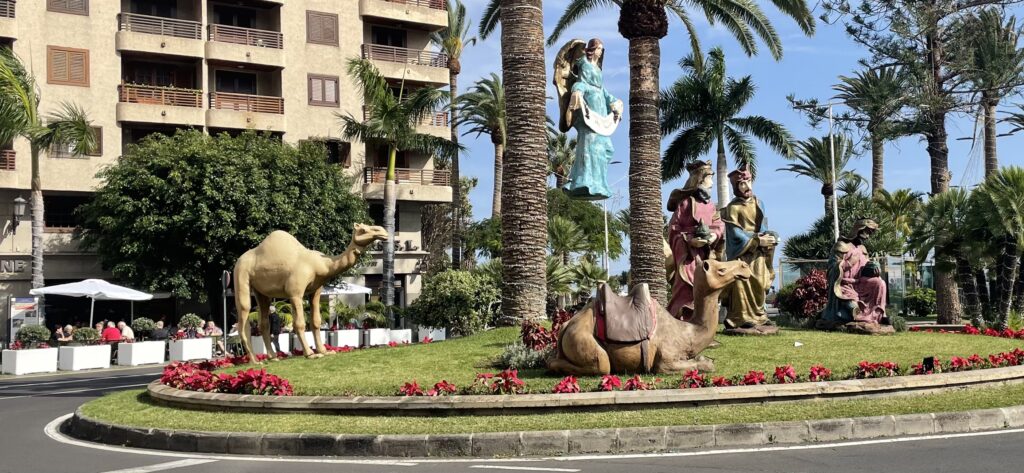
And a memento of island life before tourism.
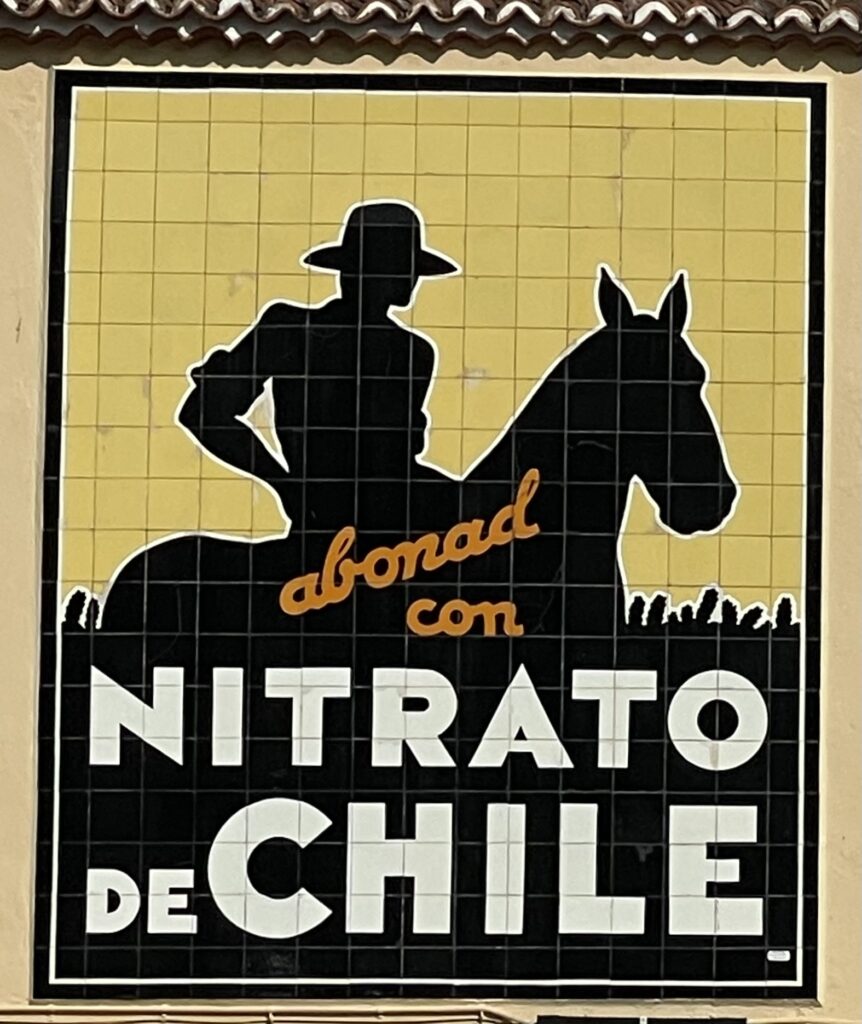 This tiled poster sized ad, designed in 1929, is by the port where all the farmers coming into town will be reminded what sort of ‘off farm’ fertiliser they should be buying. It also offers us an excellent ‘it all joins up’ as non farm fertiliser enabled the industrialisation of farming and offered yields to support growing populations in cities.
This tiled poster sized ad, designed in 1929, is by the port where all the farmers coming into town will be reminded what sort of ‘off farm’ fertiliser they should be buying. It also offers us an excellent ‘it all joins up’ as non farm fertiliser enabled the industrialisation of farming and offered yields to support growing populations in cities.
Farmers in South America had been using guano on crops since before anyone else was watching. In our great ‘joins up’ moment Alexander von Humboldt took guano samples from Peru in 1802 but it was not ‘til the 1840s that chemists- such as Liebig and in the UK, Lawes and Gilbert – understood the chemistry of plant growth and the requirement for nitrogen, phosphorous and potassium (NPK). As Peruvian guano was mined out more nitrate sources were found in Chile with railways built to reach the ports. Yields rose in Europe and America feeding their growing non-farming populations.
Though German sailing ships were still delivering to Europe until 1930 the sea trade was already in decline. During the WW1 Allied blockade of Germany the Haber-Bosch process was developed to synthesise ammonia and the guano/nitrate trade was much reduced. For scale: in 1910 non-farm nitrogen, such as from Peru and Chile, consumed was about 0.5 m tons, 3.0 m tons per year in the 1930s (post Haber-Bosch), 30 m tons in 1970 and maybe 100 m tons today. No fertiliser, no food.
Now to join up with the Doris’s quiz question: in the last ten years 1,000 volcano tourists have died. Anyone remember the Darwin Awards?
